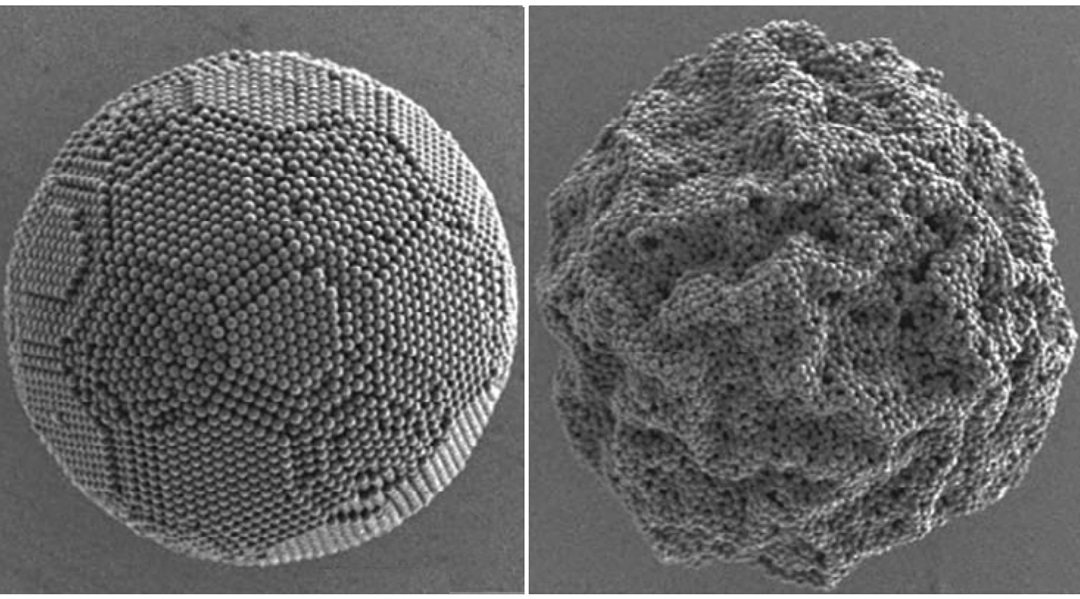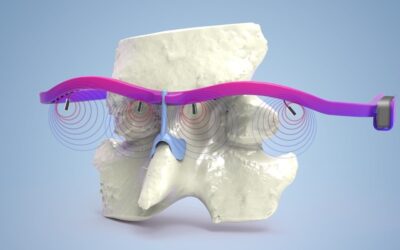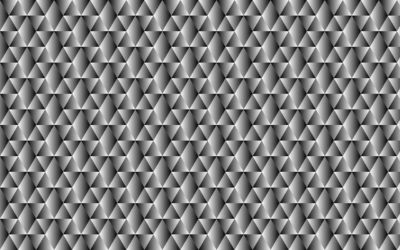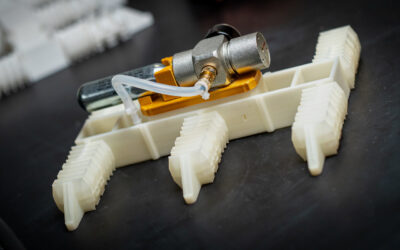Supraparticles are clusters of smaller building blocks, typically nanoparticles or molecules, for which the collective behaviour can produce interesting and emergent properties. The new functionalities that arise from this behaviour can be exploited for additive manufacturing, food science, absorption, catalysis, pharmaceuticals, and as stabilisers in fluid systems.
Tailoring supraparticle properties for such varied applications requires control over the properties of the individual particles, and the best way to manipulate this is to direct how they assemble.
Assembly of Supraparticles
As a droplet full of nanoscale building blocks dries, those nanoparticles are forced closer and closer together and self-organise (assemble) into supraparticles. The final structure of that assembly depends on how the droplet dries. If the nanoparticles are free to diffuse through the bulk liquid, spherical supraparticles form; where the process is deliberately slowed, the result is highly ordered minimum-energy structures.
Shorter drying times, on the other hand, initially lead to spheres with ordered surface structures, until a threshold speed is reached. Under very fast drying conditions, the nanoparticles are no longer able to diffuse quickly enough through the bulk liquid, and so they accumulate at the interface to form hollow particles with a dense, buckled shell. This buckling distorts the shape of the final supraparticle, creating undulating surfaces and, eventually, fully collapsed shell structures.
Controlling the drying speed of the droplet (the ‘droplet kinetics’) therefore enables control over the final shape and structure of the supraparticle and, thus, its functionality.
When Kinetics Fails: Supraparticles from Emulsions
Using kinetics to control supraparticle formation doesn’t work the same way for emulsion-based systems – systems of liquids that don’t mix, like water and oil, where one liquid exists as droplets within the other. In such systems, control over supraparticle assembly has to come from a different phenomenon: where the individual nanoparticles want to go.
Imagine every possible reaction in a system as a pathway. Some pathways are steep and rocky, and it takes more effort to travel them; some have a more gentle slope and are easier to navigate. The latter, more favourable, pathways represent reactions that are more likely to happen. If you can control how favourable a reaction pathway is (controlling the ‘thermodynamics’ of the system), then you have control over which reactions are most likely to occur.
You can direct the system to do what you want it to.
Researchers can use this trick to direct supraparticle formation in emulsion-based systems, exploiting thermodynamics to ensure that the most favourable action for the nanoparticles is to go to the water/oil interface. The drying droplet then acts as a template for their assembly into thin shells, producing just the right conditions for buckling.
Governing this affinity for the interface are the interactions between the nanoparticles and the surrounding liquids, but colloidal nanoparticles aren’t keen on the fluorinated oils typically used for microfluidic emulsions, meaning that they prefer not to remain at the interface for long in such systems.
This should prevent buckled supraparticle formation and, yet, for such systems, buckled supraparticles are being observed.

The Magic Ingredient
Water and oil won’t mix but, if you combine them and shake well, many small bubbles of one will diffuse within the other. Slowly, the two incompatible liquids will separate out again, with the oil layer finally floating above the water layer. To prevent this separation and keep emulsions stable, surfactants are added – molecules that can bridge water- and oil-based substances, such as those used in washing detergents.
Nicolas Vogel and colleagues at Friedrich-Alexander-Universität Erlangen-Nürnberg (FAU, Germany) and École Polytechnique Fédérale de Lausanne (EPFL, France) explored how these same surfactants can also make the interface a more favourable destination for nanoparticles in emulsion systems with fluorinated oils.
They used charged polystyrene building blocks and pH-responsive surfactants, which could be altered by adjusting the pH of the system. This affected their electrostatic interactions with the charged particles and, consequently, the affinity of those particles for the droplet/oil interface. Supraparticles that formed under conditions of stronger repulsion (negatively charged particles and a negatively charged surfactant) took on a spherical shape; with poor repulsion or even weak attraction between the polystyrene and the surfactant, the polystyrene preferred to adsorb at the interface, leading to buckled supraparticle structures.
Predicting Supraparticle Morphology
The mechanism behind the unexpected buckling of these supraparticles is now clear… but the implications of this study go beyond just an interesting explanation.
For fine control over the templating of supraparticles in these tricky emulsion systems, the team recognised that the local pH conditions in the water droplets change over time: by selecting the reaction time at which the polystyrene particles favoured the interface, they could tune the extent of the buckling and, thus, the final supraparticle morphology.
Their solution is especially elegant because the water/oil system they chose is well established, meaning that these findings can be broadly applied to ongoing supraparticle production processes with little disruption.
“These insights,” state the researchers without any hint of hyperbole, “provide simple handles to reliably control the morphology”. As is often agreed, and as you may also agree when looking at the images of their particles (figure above), simple is beautiful.














